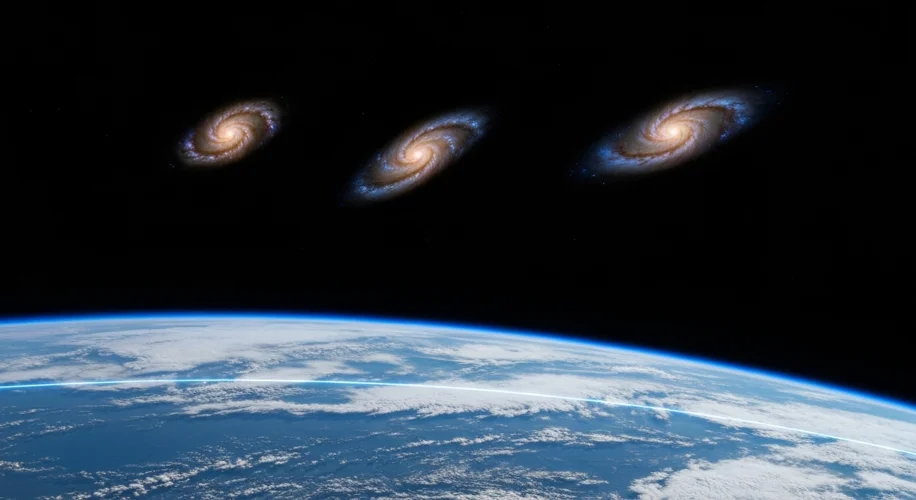It’s pretty amazing to think about what we can see from space. On August 3rd, 2025, a stunning photograph was shared that truly captures this – a single image showing not one, not two, but THREE galaxies, all while also framing our own planet and its atmosphere.
This isn’t just a beautiful picture; it’s a testament to the incredible capabilities of space exploration and Earth observation. From my background in atmospheric science, I’m always drawn to how we study our planet from above. This photo, taken from the International Space Station (ISS), offers a unique dual perspective: a vast cosmic vista and an intimate look at Earth’s delicate atmospheric layers.
Seeing Galaxies from Orbit
The fact that we can resolve multiple distant galaxies in one shot from orbit is remarkable. These galaxies, immense collections of stars, gas, and dust, are light-years away. Capturing them alongside Earth requires sensitive instruments and clear viewing conditions. The ISS orbits about 400 kilometers (250 miles) above us, placing it above much of the atmospheric distortion that can blur distant objects when viewed from the ground. This allows for incredibly sharp astronomical observations.
While the exact instruments used for this specific photograph aren’t detailed in the initial description, cameras aboard the ISS are quite sophisticated. Astronauts often use modified DSLR cameras with powerful telephoto lenses to capture both Earth and space. The ability to photograph such faint and distant celestial objects highlights the low light pollution and stable platform the ISS provides.
Earth’s Atmosphere: A Visible Shield
What makes this image particularly special is the inclusion of Earth’s atmosphere. From space, our atmosphere appears as a thin, luminous band wrapping around the planet. You can often see different layers and phenomena, like the curve of the Earth, the blues and whites of cloud formations, and the subtle glow of the atmospheric haze.
As an atmospheric scientist, I appreciate how these views from orbit help us understand weather patterns, air quality, and the overall health of our planet. These observations are crucial for climate science. By studying the way sunlight interacts with atmospheric particles and gases, we gain insights into phenomena like air pollution, cloud cover, and the distribution of aerosols – all vital components of climate modeling.
Bridging Worlds: Science and Exploration
This single photograph beautifully connects two crucial scientific endeavors: astronomy and Earth science. It reminds us that while we explore the vastness of the universe, we must also cherish and understand our home planet. The technology that allows us to gaze at distant galaxies is the same technology that gives us a profound perspective on Earth’s interconnected systems. It’s a powerful reminder of why we explore and why we study our world with such dedication.
It’s these kinds of images that fuel my passion for understanding our planet and our place in the cosmos. They show us not only the beauty of the universe but also the preciousness of our own world.

